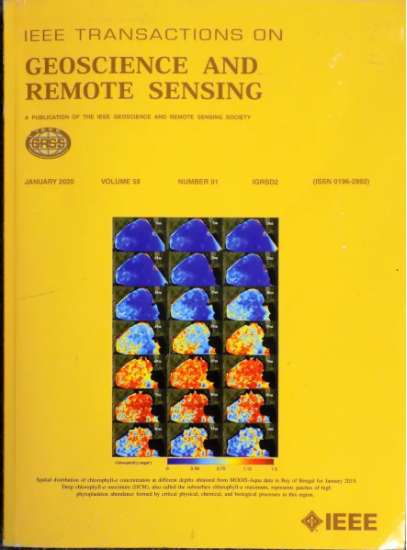利用树枝倾斜先验和增强型最短路径追踪技术,从 MLS 行道树点云中粗到细地分离木质和叶片
IF 7.5
1区 地球科学
Q1 ENGINEERING, ELECTRICAL & ELECTRONIC
IEEE Transactions on Geoscience and Remote Sensing
Pub Date : 2024-11-01
DOI:10.1109/TGRS.2024.3488696
引用次数: 0
摘要
树木在促进绿色、生态和低碳城市方面发挥着至关重要的作用,其中行道树是城市道路的必备树种。要了解这些树木的三维结构和生物特征,就必须准确分离木材和树叶。移动激光扫描(MLS)技术以其高效率和高分辨率而著称,具有显著的优势。然而,由于遮挡和扫描几何形状的原因,移动激光扫描数据往往包含缺失或重叠区域,从而使城市树木的精确建模变得复杂。为了应对这些挑战,本文介绍了一种从粗到细的方法来区分城市行道树的木质和叶片。所提出的方法首先是一个分层工作流程,其中集成了基于密度的空间聚类算法(DBSCAN)来识别单个树木节点。这些节点构成了为每棵树构建图结构的基础。通过利用有关树枝倾斜角度的先验知识,我们增强了最短路径算法,便于提取最短路径频率和长度等特征。这一初始步骤完成了木材和树叶之间的粗略区分。为了进一步提高精确度,我们对识别出的木头和树叶点进行了分析,以提取多尺度几何特征。将这些特征与随机森林(RF)算法相结合,就能更精确地分离木材和树叶点。我们的方法在 MLS 采集的路边树木中展示了良好的分割能力。与四种最先进的木叶分离方法相比,我们的方法显示出更高的准确性和效率,特别是在准确识别树干点和小枝点以及树冠外层分类方面。本文章由计算机程序翻译,如有差异,请以英文原文为准。
Coarse-to-Fine Separation of Wood and Leaf From MLS Street Tree Point Clouds Using Branch Tilt Prior and Enhanced Shortest Path Tracing
Trees play a crucial role in promoting green, ecological, and low-carbon cities, with street trees being essential for urban roadways. Understanding the 3-D structure and biological characteristics of these trees requires accurate separation of wood and leaf. Mobile laser scanning (MLS) technology, known for its high efficiency and resolution, offers significant advantages. MLS data, however, often contain missing or overlapping areas due to occlusions and scanning geometry, complicating precise urban tree modeling. To address these challenges, this article introduces a coarse-to-fine approach for distinguishing wood from leaves in urban street trees. The proposed method begins with a hierarchical workflow that integrates the density-based spatial clustering of applications with noise (DBSCAN) algorithm to identify individual tree nodes. These nodes form the basis for constructing a graph structure for each tree. By leveraging prior knowledge of branch tilt angles, we enhance the shortest path algorithm, facilitating the extraction of features like shortest path frequency and length. This initial step completes a coarse differentiation between wood and leaves. To further refine accuracy, the identified wood and leaf points undergo analysis to extract multiscale geometric features. Integrating these features with the random forest (RF) algorithm results in a more precise separation of wood and leaf points. Our method demonstrates promising segmentation capabilities in MLS-captured roadside trees. Compared to four state-of-the-art methods for wood and leaf separation, our approach shows superior accuracy and efficiency, particularly in accurately identifying trunk points and minor branch points, as well as classifying the outer canopy layer.
求助全文
通过发布文献求助,成功后即可免费获取论文全文。
去求助
来源期刊

IEEE Transactions on Geoscience and Remote Sensing
工程技术-地球化学与地球物理
CiteScore
11.50
自引率
28.00%
发文量
1912
审稿时长
4.0 months
期刊介绍:
IEEE Transactions on Geoscience and Remote Sensing (TGRS) is a monthly publication that focuses on the theory, concepts, and techniques of science and engineering as applied to sensing the land, oceans, atmosphere, and space; and the processing, interpretation, and dissemination of this information.
 求助内容:
求助内容: 应助结果提醒方式:
应助结果提醒方式:


